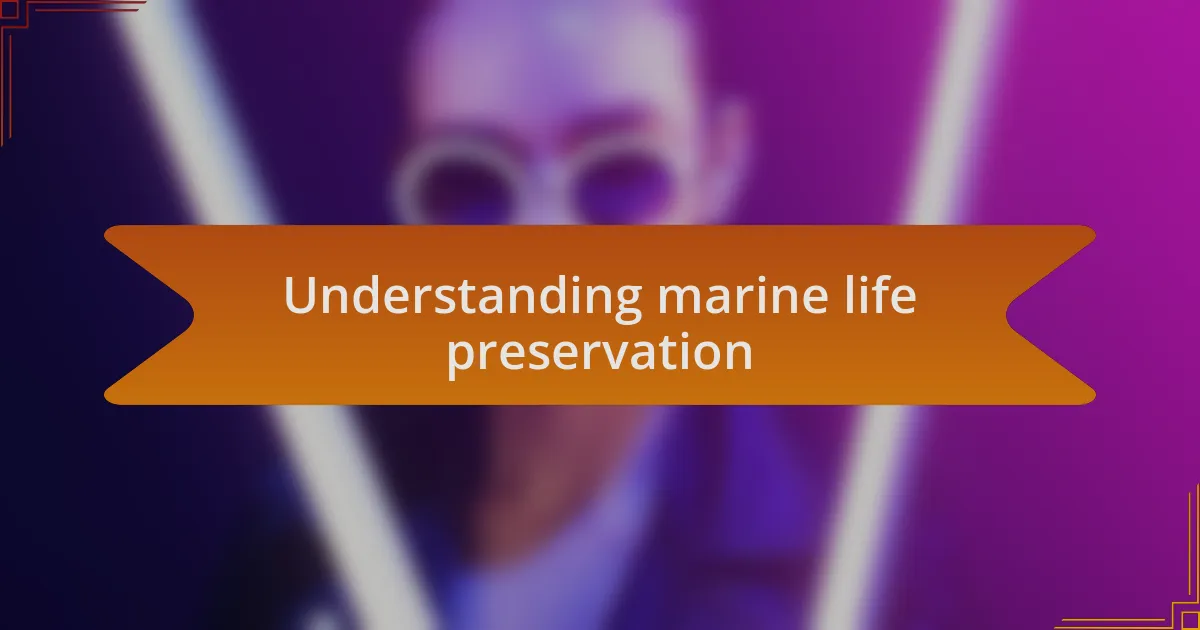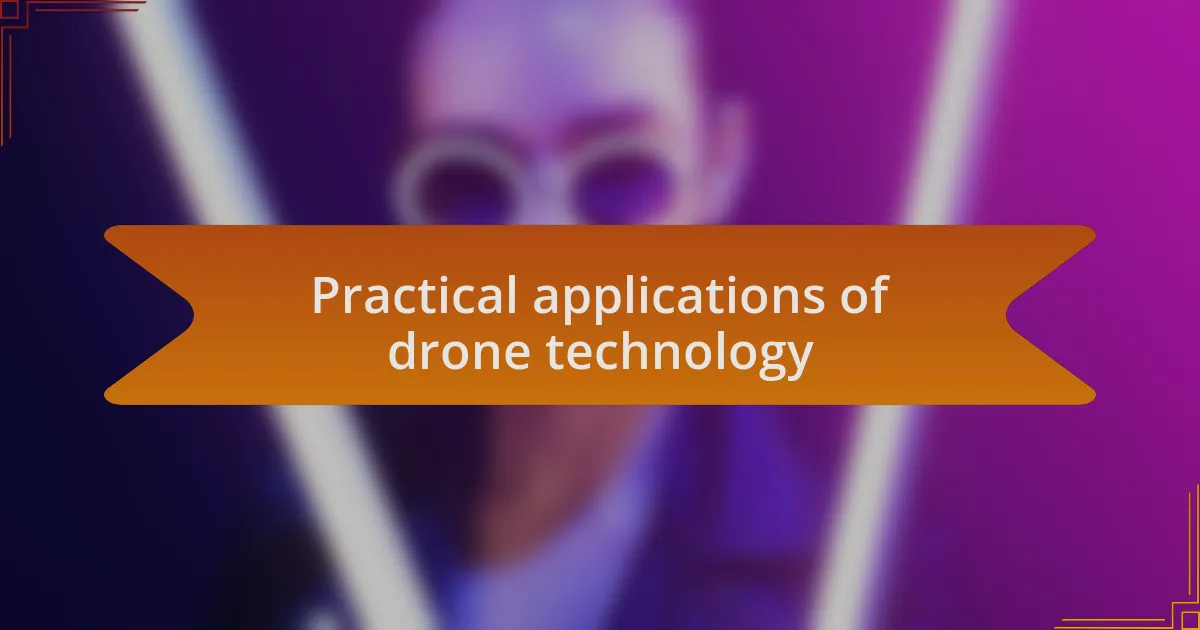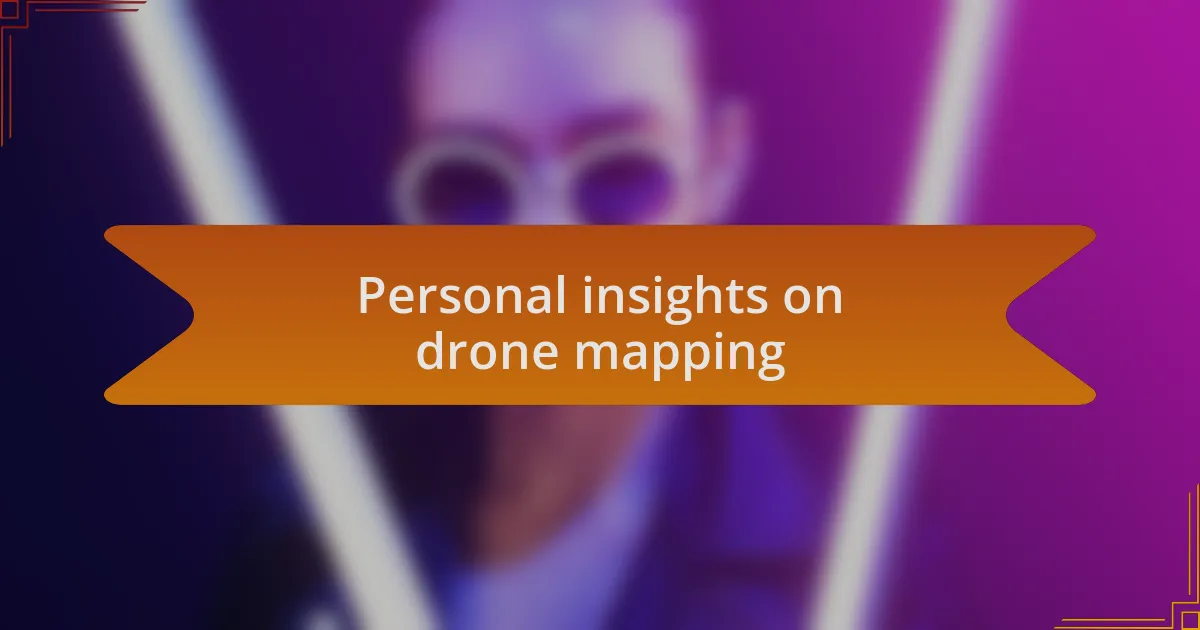Key takeaways:
- Marine life preservation is essential due to the interconnectedness of ecosystems and the impact of human activities like pollution and climate change.
- Drone mapping significantly enhances conservation efforts by providing detailed monitoring of marine environments and enabling local communities to engage in protective actions.
- Zanzibar’s diverse marine ecosystems face threats from overfishing and pollution, highlighting the need for responsible practices to ensure their survival.
- Technology fosters collaboration and awareness, empowering communities to implement sustainable practices and adapt to environmental changes.

Understanding marine life preservation
Understanding marine life preservation is vital for our ecosystems. I vividly remember my first dive in Zanzibar’s coral reefs. The vibrant community of fish and corals was mesmerizing, but I soon realized that this beauty is fragile. Have you ever considered how our actions on land ripple through the ocean? The health of our marine environments directly relates to human activity, from pollution to climate change.
It’s astounding to think about the biodiversity existing in our oceans. Each fish, coral, and plankton plays a unique role in their habitat. When I swim among the reefs, I often reflect on how our preservation efforts can ensure that future generations experience this wonder. Have you thought about what it means to sustain this balance? Every little choice, like reducing plastic use or supporting sustainable fishing practices, contributes to marine life preservation.
As I engage with local communities in Zanzibar, it’s clear that education and awareness are crucial. People often express a deep connection to the sea, yet many are unaware of the pressures facing marine life. I’ve found that sharing knowledge about the importance of preserving these ecosystems inspires change, fostering a sense of stewardship. What do you think we can do to elevate these conversations in our everyday lives?

Importance of drone mapping
Drone mapping plays a transformative role in preserving marine life, offering a bird’s-eye view of intricate ecosystems. I recall a time when we conducted a mapping project to survey the health of a coral reef. The precision and detail captured allowed us to identify damage and initiate conversations about restoration efforts. Have you ever wondered how technology can make a tangible difference in conservation?
Moreover, drones facilitate real-time monitoring of marine environments, which is critical for understanding changes over time. During a mapping session, I felt a mix of excitement and responsibility as we tracked shifts in sea turtle nesting sites due to rising water temperatures. Does knowing that such insights can lead to proactive measures not emphasize the importance of this technology in conservation?
In my experience, the accessibility of drone data also empowers local communities. Once, after sharing drone footage showing coral bleaching patterns, locals engaged in identifying actions to protect their marine resources. Isn’t it inspiring how visual data can spark awareness and drive collective action towards preserving our oceans?
Overview of Zanzibar’s marine ecosystems
Zanzibar’s marine ecosystems are a mosaic of biodiversity, showcasing stunning coral reefs, mangrove forests, and seagrass beds. I remember snorkeling in a vibrant reef, surrounded by a kaleidoscope of fish. It struck me how interconnected these ecosystems are; each component relies on the health of the others. Have you ever paused to think about what sustains such beauty below the surface?
The waters around Zanzibar serve as critical habitats for numerous species, including endangered sea turtles and the elusive dugong. During one of my dives, I was fortunate to see a turtle gracefully gliding through the corals, a symbol of resilience. Observing such an endangered creature in its natural habitat made me acutely aware of the delicate balance that exists within these underwater realms. Isn’t it fascinating how every creature plays a role in the broader ecological narrative?
Zanzibar’s marine areas also face significant threats from human activity, including overfishing and pollution. It’s disheartening to realize that even minor changes can lead to drastic consequences for these fragile environments. I once participated in a beach cleanup, where we discovered fishing nets twisted around mangroves, choking the life out of them. It made me wonder: what can we all do to ensure that these ecosystems thrive for future generations?

Practical applications of drone technology
Drone technology has transformed how we monitor and preserve marine ecosystems like those in Zanzibar. For instance, I recall a project where drones surveyed coastal areas, capturing high-resolution images that revealed coral bleaching patterns. Analyzing these images helped researchers devise targeted interventions, and I felt inspired seeing technology playing such a pivotal role in conservation efforts.
Moreover, drones can collect data rapidly over vast areas, making them invaluable for tracking marine species. During a recent excursion, I witnessed a drone being used to track the migratory patterns of sea turtles. It was remarkable to see real-time data being analyzed to ensure that protective measures could be implemented where needed. How often do we consider the impact of technology on wildlife protection?
Finally, drone-based mapping offers an innovative approach to assessing the health of mangrove forests, which are crucial for shoreline protection and biodiversity. I participated in a project where drones provided a bird’s-eye view of mangrove coverage after a storm. The insights gained not only highlighted areas in need of restoration but also connected a community of volunteers working towards rebuilding these vital ecosystems. Have you thought about how technology can unite people for the cause of preservation?

Personal insights on drone mapping
As I reflect on my experiences with drone mapping, one standout moment was when I flew a drone over a previously unexplored reef. The anticipation as I pressed the button to launch the drone was tangible; the imagery captured unveiled a vibrant underwater landscape teeming with life. It was a reminder of how much is left to discover and protect beneath the waves.
I’ve also noticed how drone mapping fosters collaboration among local researchers and community members. On one occasion, I joined a team examining fish populations through drone footage. Witnessing the excitement in the eyes of local fishers as they realized the potential for sustainable fishing practices was genuinely uplifting. Have you ever experienced that spark of hope when technology brings people together for a common goal?
More recently, I’ve been captivated by how drone technology can visualize changes over time. In a project examining shoreline erosion, I saw our initial drone images compared with follow-up surveys months later. The difference was striking, and it sparked discussions about how communities can adapt and respond. It made me wonder: how much more can we achieve if we leverage drones to bring awareness to environmental changes?